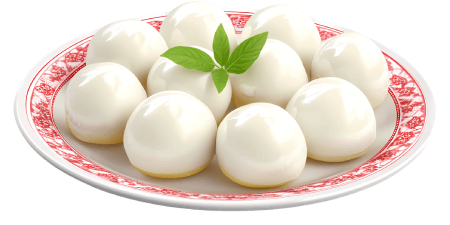
Mozzarella is one of the most beloved cheeses in the world, known for its delicate texture and versatile uses in everything from pizza to caprese salads. But when it comes to mozzarella, there's more to it than just a simple, stretchy white cheese. Mozzarella is often categorized into two distinct types: fresh and aged. These two varieties have different characteristics, flavors, and uses in cooking, and understanding the differences between them can elevate your cheese knowledge and cooking experience.
In this article, we'll explore what makes fresh and aged mozzarella distinct, how they're made, and where they shine in the kitchen. Whether you're a cheese enthusiast or simply looking to enhance your cooking with the perfect mozzarella, read on to dive deep into the world of mozzarella cheese.
What is Mozzarella?
The Italian cheese mozzarella used to be made from the milk of a water buffalo. Nowadays, cow milk is what commercial producers generally prefer. The word "mozzarella" derives from the Italian "mozzare," meaning "to cut off," thereby describing the traditional method of hand-pulling and cutting the curds to form the cheese.
The cheese is soft with a mildly sweet flavor and a creamy texture, considered classic for numerous dishes, especially those which ought to be baked or served fresh. But mozzarella is unique in that it can be produced and consumed in many forms, which differ in their texture and flavor profiles, depending on the way they are made and aged.
Fresh Mozzarella

The most familiar of the three kinds of cheeses is perhaps the fresh mozzarella. It is made by a process called "pasta filata," where the curds are stretched and kneaded when hot to obtain softness and smoothness. Fresh mozzarella is usually packed in brine or whey, or a solution of both, to gain moisture while picking up some flavor, making it taste mildly salty with a creamy texture.
Characteristics
- Texture: Fresh mozzarella is soft, moist, and has a delicate, smooth texture. It's often described as having a slight "stretch" when torn or bitten into, which is why it's a favorite for dishes like pizza and lasagna.
- Flavor: The flavor is mild and milky, with a slight tang that becomes more pronounced depending on the freshness. The taste is subtle, and fresh mozzarella is usually enjoyed for its light and creamy profile.
- Appearance: It is typically white and slightly glossy, often stored in water or brine to retain moisture.
Best Uses
Fresh mozzarella shines in dishes that highlight its delicate texture and mild flavor. Some of the best uses include:
- Pizza: Fresh mozzarella is the cheese of choice for traditional Neapolitan-style pizza. Its creamy texture and meltability make it perfect for pizza, especially when paired with fresh tomatoes, basil, and olive oil.
- Caprese Salad: One of the simplest and most flavorful ways to enjoy fresh mozzarella is in a caprese salad, where it's paired with ripe tomatoes, basil, and a drizzle of balsamic vinegar.
- Sandwiches & Panini: Fresh mozzarella also works well in sandwiches, particularly when paired with fresh vegetables, meats, or pesto.
How to Store
Because of its high moisture content, fresh mozzarella should be eaten relatively soon after purchase. If you're not using it immediately, store it in the brine or water it came in to preserve its freshness. If it's been opened, wrap it in plastic wrap and place it in an airtight container, using it within 1-2 days for the best flavor and texture.
Aged Mozzarella
While fresh mozzarella is beloved for its soft and creamy texture, aged mozzarella offers a different experience. Aged mozzarella undergoes a longer curing process, which changes its flavor, texture, and appearance. This aging process may range from a few weeks to several months, depending on the type of mozzarella and the desired outcome.
Characteristics
- Texture: As mozzarella ages, it becomes firmer and drier. The longer it is aged, the more crumbly and dense it becomes, compared to the fresh variety. This is due to the moisture evaporating over time.
- Flavor: The flavor of aged mozzarella is much more robust than that of fresh mozzarella. It develops a sharp, tangy, and sometimes nutty taste that becomes more pronounced with age.
- Appearance: Aged mozzarella typically has a pale yellow color and may have a slightly cracked or wrinkled exterior.
Best Uses
Aged mozzarella is great in those culinary preparations that benefit from its harder texture and stronger flavor. It is excellent for grating over pasta or pizza so that it imparts a strong taste without becoming too greasy. It stands up well under heat in baked preparations of lasagna, casseroles, or stuffed breads and imparts its deep flavor into the whole dish.
Storage
Less straightforward to preserve than its fresh kind, aged mozzarella can be handled by wrapping tightly, preferably in wax paper or parchment, and then placed in an airtight container or sealed bags. It can last in the fridge for several weeks or even months, depending on how lengthy the aging process is for the cheese.
Key Differences
You should be made aware of the key differences between the two types of mozzarella in order to make an informed decision about which would work better for your dish. These differences stretch beyond taste and include texture, moisture, and best cooking applications. Below is a breakdown of what separates him in each category.
Texture and Moisture
The most obvious difference between fresh and aged mozzarella is texture. Fresh mozzarella is soft and moist, while aged mozzarella becomes firmer, drier, and more crumbly. This difference is largely due to the aging process, which allows moisture to escape over time.
Flavor
Fresh mozzarella has a delicate, milky flavor with subtle sweetness, while aged mozzarella takes on a more complex and intense flavor, often described as tangy, nutty, and slightly sharp.
Uses in Cooking
Fresh mozzarella is best enjoyed in recipes that showcase its creamy texture, like caprese salads and pizzas. The aged varieties, on the contrary, are better for grating and baking or when a stronger-flavored cheese is needed in a dish.
Summary - Which Mozzarella is Right for You?
There are occasions when either fresh or aged mozzarella must serve their unique roles in a kitchen, depending on what is intended in an establishment, so mozzarella may be useful depending on the dish to be prepared. If you want a soft, creamy cheese that melts smoothly on pizza or with salad, use fresh mozzarella. Aged mozzarella is the way to go when you want a firmer cheese that melts less readily and with a stronger flavor so that one can grate, bake, or use with charcuterie. Try all varieties in all recipes since each has its own characteristic to offer. Regardless of whether it is fresh or aged, mozzarella will give a dish that Italian touch.
Recipes
Explore More
- Authentic Neapolitan Pizza Recipes & Tradition at La Piazza Al Forno
- Cooking Tips, Techniques, and the History of Your Favorite Recipes
- The Secrets Behind Authentic Neapolitan Pizza Dough
- How to Build a Perfect Backyard Pizza Oven for Homemade Pizzas
- Differences Between Fresh and Aged Mozzarella - How to Choose the Right One
- Master the Art of Pizza Making with Our Recipes at La Piazza Al Forno
- Meet Us







